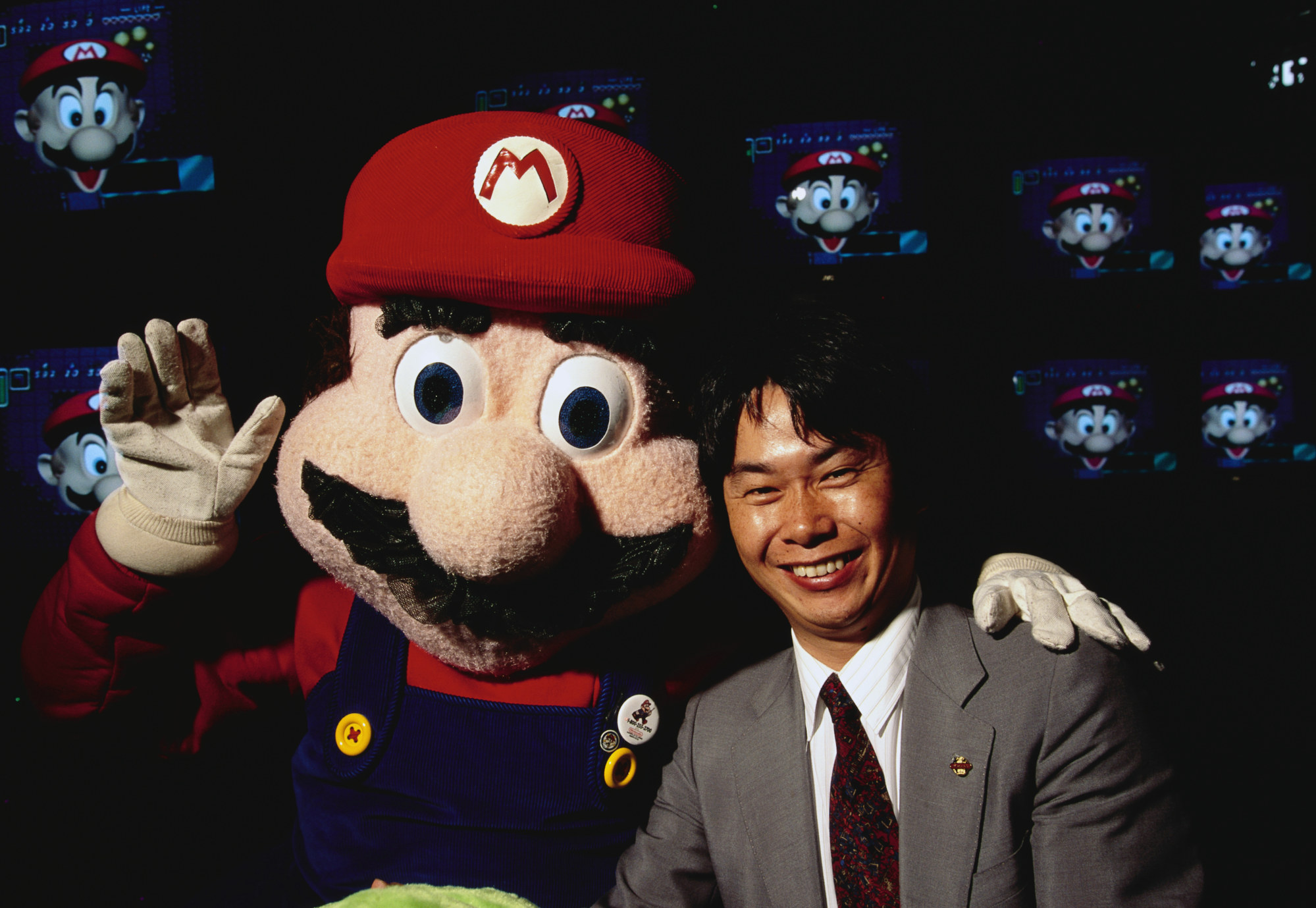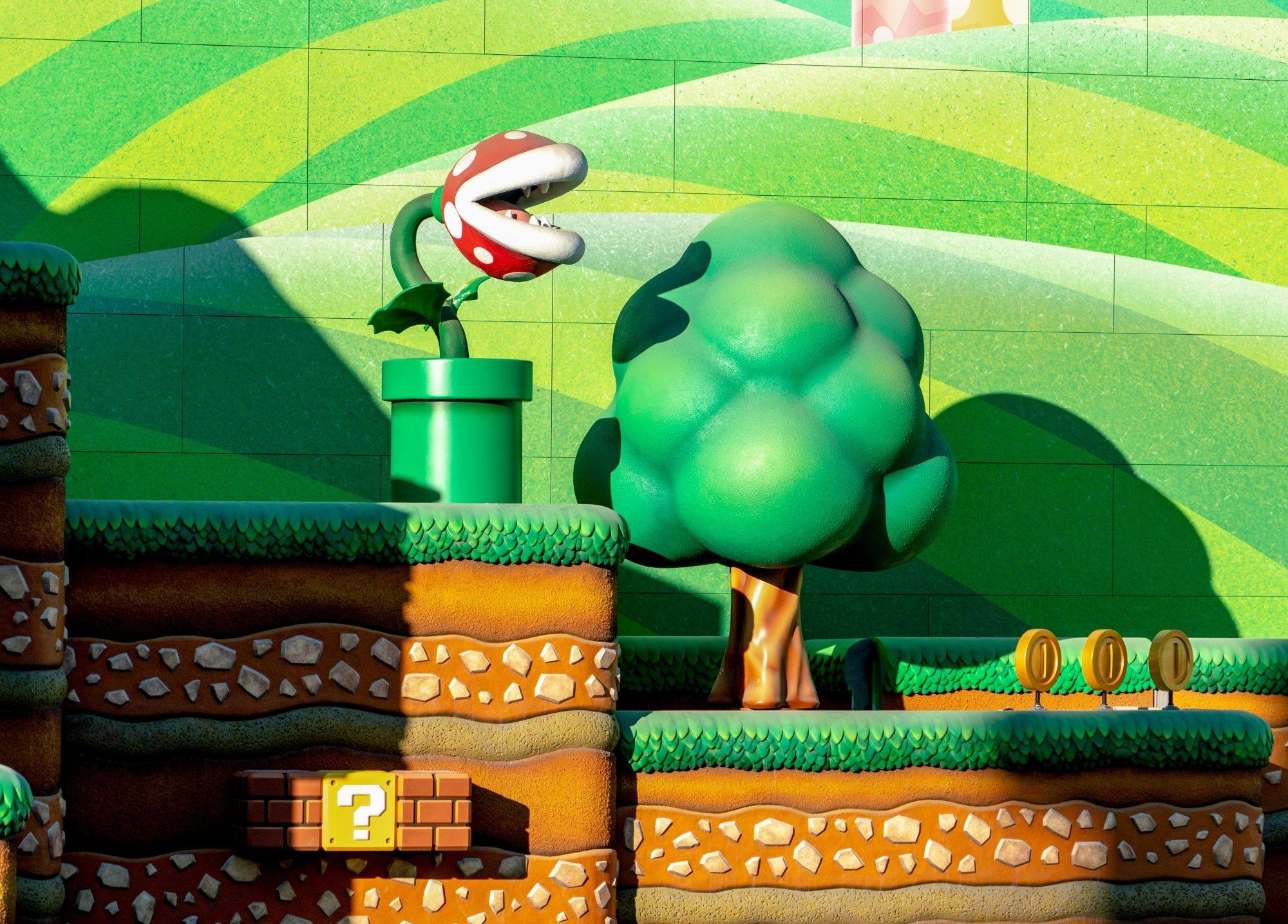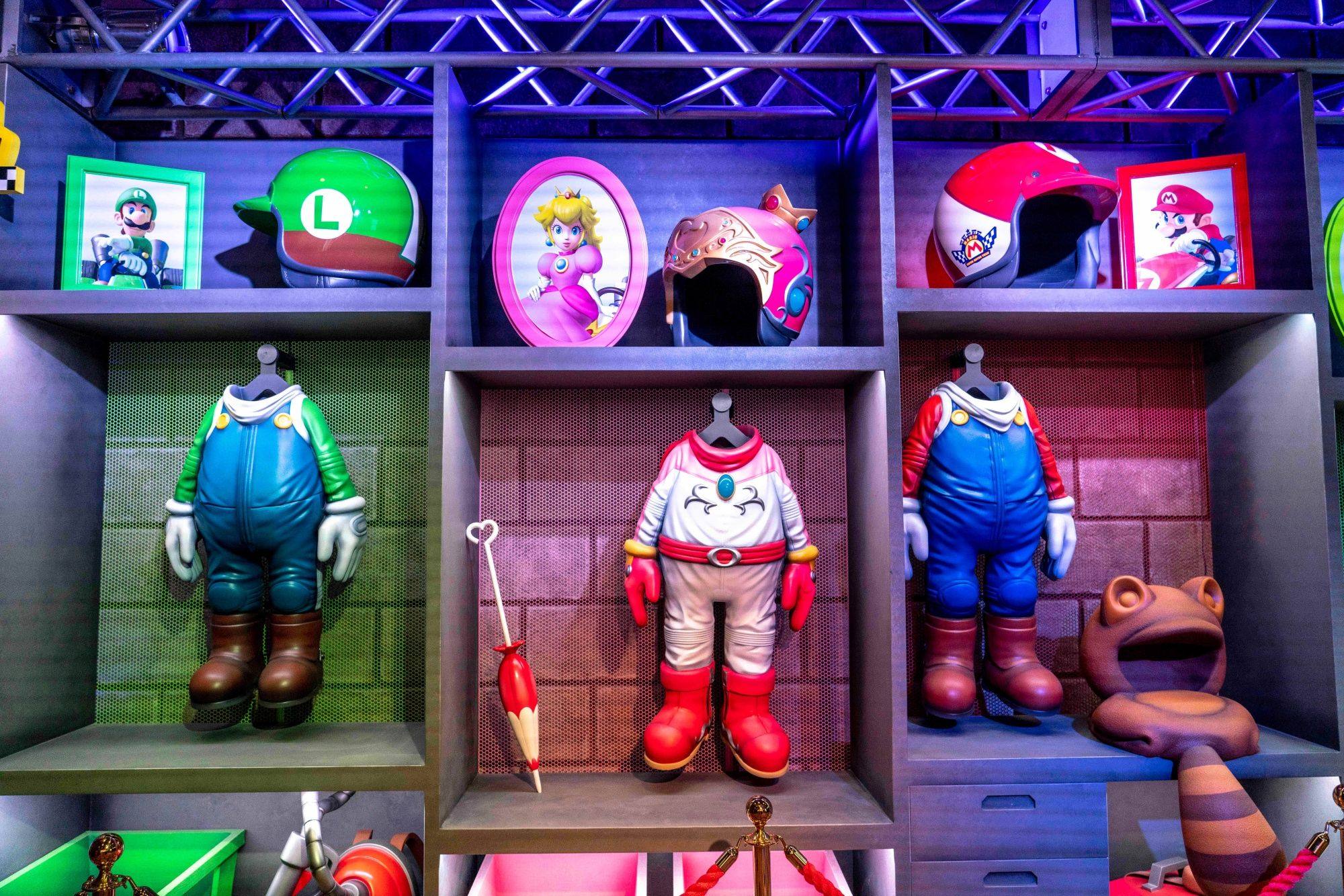
‘You’re going to be in a video game’: Super Nintendo World at Universal Studios Hollywood theme park is a bold statement about the future of entertainment
- Representing many firsts for the US, Super Nintendo World will be the most participatory theme park universe ever envisioned
- Opening on February 17, it includes a Mario Kart ride that melds physical sets with movement-tracking augmented reality that responds to guest positions
In 1981, Shigeru Miyamoto created a video game character whose entire personality was contained in what the designer first described as “16 dots by 16 dots”.
As that character evolved, those pixels would comprise red braces, a pouch of a tummy, an oversized nose, a bushy moustache and eventually a whole lot of jumpy pluckiness, making him an unlikely but confident hero as he sought to rescue a damsel in distress.
Miyamoto at first called him Mr Video, a prescient and self-assured designation for a character who by 1985 would come to dominate home television screens.
It wasn’t long before Mr Video transitioned into Mario, the most recognisable video game character ever created.

Mario would become so popular that Miyamoto would look to the Walt Disney Company and its brand management of Mickey Mouse for direction.
“Mickey Mouse sort of grew and evolved alongside cartoons and animation,” Miyamoto once told The Los Angeles Times. “I felt it would be best for Mario to grow and evolve alongside video games. Whenever we introduced new technology, we always paired that introduction with a new Mario game.”
Today, Mickey Mouse ears are a global symbol for theme parks around the globe. Could Mario’s trademark red newsboy-like cap challenge that dominance?
Maybe, but that’s not the bet driving Universal Studios to build multiple Nintendo-inspired lands in its theme parks.
“I think it’s very clear,” says Jon Corfino, vice-president at Universal Creative, the division of the company responsible for theme park experiences. “It means that entertainment is not static.”
The colourful ground where Corfino is standing in Universal Studios Hollywood was once home to blocky soundstages. Today, his feet are planted on an oversized yellow star in a space dedicated to Super Nintendo World, the first major video-game-driven land in a United States theme park.

It’s a historic and remarkable shift for a park that has long stood as a temple dedicated to cinema.
For nearly six decades now, the backlot Studio Tour has provided fans, tourists and aspiring filmmakers with their first notable glimpse at behind-the-scenes studio magic: the haunted imagery of a Bates Motel, the thrill of a Jaws-like shark attack or the ability to imagine the Back to the Future clock tower being shocked to life with a lightning bolt.
But on February 17, when Super Nintendo World officially opens to the public, Universal Studios will be making one of the boldest statements yet about the future of entertainment: it will be interactive.

Such a belief has been driving the entirety of the theme park industry for much of the last two decades, and Super Nintendo World, a larger version of which opened in 2021 at Universal Studios Japan, will be the most fully realised vision of a living, persistent land designed to respond to – and play with – guests.
“There is a storyline behind this whole experience,” Corfino says.
Guests, after walking through one of Mario’s hallmark green pipes, will find themselves in the castle of his beloved Princess Peach, who has just had her golden mushroom stolen.
“Part of our mission is to help her get it back,” Corfino says. “That’s the rationale and the purpose behind a lot of the interactive games.”

And with the land, Mario again will be introducing players – now theme park guests – to a new technology.
Mario Kart: Bowser’s Challenge, the land’s sole ride, will, in a first for an American theme park, meld physical sets with movement-tracking augmented reality (AR) that will respond to guest positions.
It’s part old-school-theme-park dark ride – guests will board cars and follow a track – and part showcase for a new form of game-playing.
Guests will be asked to steer, throw and aim along a predetermined path in an experience that prioritises gamification, special effects and theme park wizardry over high-speed thrills.
They could have made Super Nintendo World a big arcade. But it’s clear the mandate was … [t]his is a place where you’re going to go to be in a video game
The attraction will place attendees, four to a car, alongside Mario, Luigi, Princess Peach and a host of other recognisable Nintendo characters, all in a highly participatory racing challenge against the demonic, turtle-meets-dragon figure of Bowser, Mario’s long-time archnemesis.
To get to the ride, visitors will first traverse a blazingly vibrant land that will mash up multiple scenes from the popular Super Mario games.
One can gaze out of AR-enhanced telescopes near icy peaks with blue, snow-lined trees or stand below desert vistas in which a Pokey – a cactus-inspired, centipede-like creature – stalks from above.
Throughout, there is constant movement: Piranha Plants chomp, a stony Thwomp slams with force, and yellow blocks, ripe for punching – or ill-advised headbutting – dot what feels like a life-size obstacle course.

Gold coins, forever out of reach, spin and glint in the Southern California sun as bouncy-looking mushrooms look eager to be jumped upon.
We won’t, however, be able to run and hop through the land like Mario, but we’ll certainly feel like we should; as side-scrolling platforms tempt us to go higher, the turtle-like Koopas will walk back and forth around us, and the mushroom-inspired Goombas will wobble, stack and practically taunt us to pounce on them.
But good news: we will be able to play, as dotted throughout the land are four multiplayer challenges – mini-games that will culminate in a group battle against Bowser Jr.

If all goes as planned, Super Nintendo World will be the most participatory theme park universe ever envisioned.
“They could have made Super Nintendo World a big arcade,” says Jesse Schell, a game designer and long-time advocate for interactivity in public spaces, having worked with theme parks around the world.
“But it’s clear the mandate was that this is not going to be a place where you go to play video games. This is a place where you’re going to go to be in a video game.”
Theme parks, of course, have always been dedicated to interactive play. One can argue that a land such as Super Nintendo World – or the game-filled Star Wars: Galaxy’s Edge at Disneyland Park in Anaheim, also in California – are rooted in this mission.

There is an aspect of this approach that dates back to Disneyland’s 1955 beginnings, most notably in the staged shoot-outs and pack mules that brought theatrics and activity to Frontierland. Tom Sawyer Island joined the latter in 1956, allowing guests to run free amid caves, trails and a suspension bridge.
The change, however, is how guests are viewed. We were once seen largely as audience members. Today, we’re essentially actors in giant playsets. That is, if we want to be.
A pivotal moment: the 2014 introduction of interactive wands at Universal’s first Wizarding World of Harry Potter, which turned the entire land into a living universe by giving players the illusion of magic-making abilities.

Instead of wands, Universal hopes Super Nintendo World guests invest in Power-Up Bands, interactive wristbands available for US$40.
The bands will connect with an app, which will allow guests to track their progress in recapturing the golden mushroom, as well as allow them to collect virtual coins throughout the land and keep tally of their Mario Kart ride scores.
Corfino says characters in the land – Mario, his brother Luigi and Princess Peach – will be able to respond to guests based on the progress recorded by their bands.
More important, the bands and app will prod guests to play the games that dot Super Nintendo World, which will be broad in scope.
Most of the games require participation among multiple parties of guests. Some are timed challenges, others are crank-led puzzles, and one is a chaotic, touch-fuelled game that has players turning over digital blocks.
“My definition of games is maybe a little bit different,” Corfino says.
“I know that some folks like to say if somehow the experience is keeping score, it’s a game. There are other attractions that have, on a one-dimensional level, kept score. But from a complete immersive aspect, everything that you’re doing here is being tied into your Power-Up Band.
“Then, delving into the reality of the Mario Kart ride experience, where you have AR goggles, physical sets, video mapping, LED projection – you are in a full-blown game that is unique every time based on what you’re doing. It’s pretty next level.”
The theme park industry will be watching.

